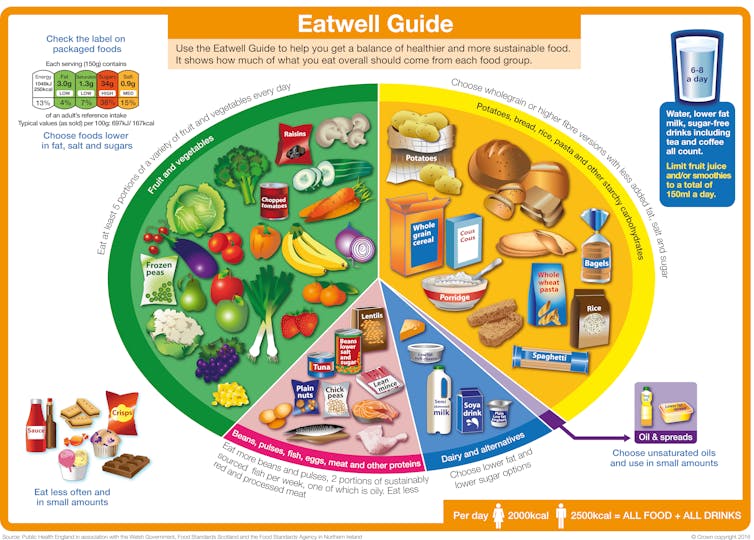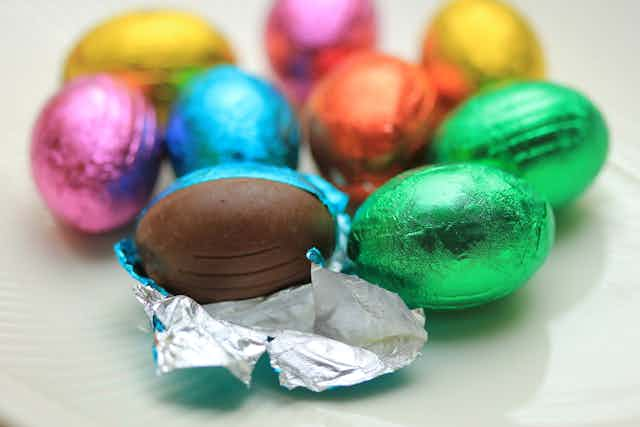Who doesn’t like chocolate? While there may be some who claim to prefer savoury – in my experience, crisps are suggested by these strange people as an equivalent – chocolate has a special place in many people’s hearts, and Easter gives them the perfect opportunity to consume vast quantities of it.
The history of how a Christian festival celebrating the resurrection of Jesus came to be united with a blend of cocoa, fat and sugar is interesting and demonstrates how food can come to mean so much more than its nutritional content and even its sensory experience.
There are many theories and not a huge amount of conclusive evidence, but there is a consensus that eggs and rabbits are ancient symbols of new life and were used in pre-Christian times around the spring equinox. They eventually merged with Christian religious practice and are now taken very seriously.
The first chocolate Easter eggs appeared in Europe in the 19th century. They were painstaking to make and expensive. It wasn’t until manufacturing techniques had advanced sufficiently that they became widely available. By 1893, Cadbury was selling 19 different chocolate eggs.
But chocolate, of course, has a much deeper history. Described in ancient Mayan texts as “a gift from the gods”, cocoa has long been associated with medicinal properties. It is one of the most craved foods, particularly among women, and is associated with promoting positive feelings.
Historically, it has also served important social functions. In the 1800s, for example, the Temperance movement promoted cocoa drinks as an alternative to alcohol. Indeed, many well-known brands – Cadbury, Rowntree, Frys – were founded by Quakers with a focus on social reform.

Killjoys
Despite all this history, however, chocolate is now synonymous with an unhealthy lifestyle, junk food and obesity. For example, Public Health England’s revamped Eatwell Guide (formerly the Eatwell Plate) no longer allows chocolate to be part of a healthy “plate” of food. Instead, it is relegated to the naughty corner where it languishes alongside crisps (bad luck, savoury lovers), biscuits and tomato ketchup.
Chocolate, then, is naughty but nice, so consumers sometimes feel guilty for enjoying it. And while there is no scientific agreement that chocolate can be defined as addictive, people can experience what is considered to be uncontrollable cravings.
Considering the psychological and social importance of chocolate, however, it is neither realistic nor desirable to demonise it and seek to eliminate it from the diet. (Even the Eatwell Guide concedes that chocolate falls into the “Eat less often and in small amounts” category.) But how can we build a more positive relationship with this food?

Eat chocolate mindfully
Very quietly, we are going to mumble “mindfulness”. The popularity of a mindful approach peaked a while ago, but it has basic principles that are useful.
Mindfulness can be defined as an open, non-judgmental attention to your present-moment experiences, including your behaviour, bodily sensations, thoughts and feelings. When you are being non-judgmental, you respect both yourself and the food. Respecting the food means that you need to take time to appreciate its taste. This allows you to be attentive to feelings of pleasure and satiety. Simply enjoying the chocolate for what it is – no more, no less.
One recent experiment – supported by the National Confectioners Association – demonstrated that eating chocolate in a mindful manner improved participants’ moods. Hardly conclusive evidence, but perhaps a mindful approach can help us to get the maximum amount of pleasure from the experience and move us away from an overly simplistic view of food as good or bad.
As humans, we need a range of food, and not just as fuel to keep our bodies functioning. Consuming for pleasure and celebration, for example, is normal and necessary. Which propels us to ask some searching questions of public health officials and nutritional scientists: when developing dietary guidance, to what extent do they take psychological and social needs into account?
This Easter, if you choose a chocolate egg, be it for its religious and cultural symbolism, or because it is so very cute, commit to eating it without guilt.

